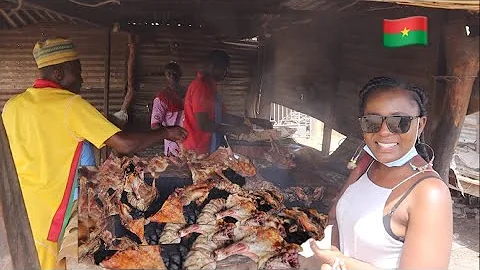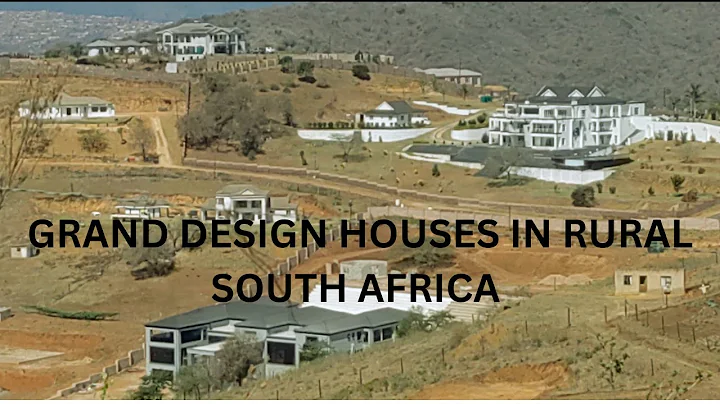The 2022 Pritzker Architecture Prize was awarded to Diebedo Francis Carlyle. This is also the first time that the "Nobel Prize in Architecture", known as the "Nobel Prize in Architecture", has been awarded to an African architect. For building beautiful, practical houses on relatively barren land that respect local traditional living wisdom, this architect from a poor rural village in Burkina Faso, West Africa, has won "the highest honor in the industry."
Recently, Carlyle was interviewed by a reporter from Beijing News . In China's rural areas, we are also facing many urgent rural construction issues. Those villages that have just escaped from absolute poverty also have a strong need to build beautiful homes. Surprisingly, Carlyle, who often builds houses in far-off Africa, has been to China. Recently, he also has the desire to learn Chinese and understand Chinese history. "Of course there are differences between China and Africa, but there are more similarities than differences, and they should be mutually exclusive," he said. study". When it comes to rural construction in China, he has his own suggestions, "I think China has been focusing on creating cities for some time and has achieved incredible construction achievements, but now it may be time to go back to the countryside and learn some 'traditional crafts' We will cultivate more young and outstanding architects to create spaces that connect the future with the past."

Carlyle won the 2022 Pritzker Architecture Prize. His first building was built for his hometown village of Gando. Photo provided by interviewee
His hometown of Gando Village is the driving force for his work
The Pritzker Prize The jury commented on this year’s winner Carlyle: “Francis Carlyle pioneered sustainable development architecture on extremely scarce land. He is both an architect and a servant. Through his beauty, humility, bold creativity, clear architectural language and mature thinking, he has improved the lives of countless residents in an often forgotten part of the earth and brought the scope of the discipline of architecture to people. In addition to gifts, Carlyle has adhered to the mission of the Pritzker Prize."
's comment "extremely scarce land" refers to Carlyle's hometown Burkina Faso , Africa on the edge of the Sahara Desert country, one of the poorest in the world. The local dry season is long, and the rainy season is short but the rainfall is concentrated. The clay houses where local people live often collapse after one rainy season.
Carlyle was born in 1965 in a village called Gando. At that time, Ganduo Village had no electricity, drinking water, and educational resources. Carlyle was one of the first people in his village to have the opportunity to go to school and get an education. Whenever he was leaving the village before school started, Carlyle would go door-to-door to say goodbye to the villagers. The women would open their pockets and give him, usually the only coin they had on them, which left a deep impression on Carlyle. When Carlyle asked his mother why everyone loved him so much, her mother replied: "They hope to contribute to your education. They hope that you will succeed in your studies and one day return to Gando to help the people in the village improve." Life".
Carlyle really lived up to the expectations of the villagers. He received a vocational carpentry scholarship and went to Germany to study, and eventually became an excellent architect. He could truly give back to his hometown. In the interview, Carlyle told the Beijing News reporter that to this day, his hometown is still the most important motivation for his work, "My first building was for the villagers, and everything after that has a little bit of Gando. "
Architecture can inspire rural areas to create the future.
Carlyle's first building is the school in his hometown. While studying in Germany, Carlyle wanted to do something for Gando Village. He created a foundation and went to raise funds among his classmates and teachers, asking them to spend less money on coffee and cigarettes and use the money to support the construction of rural schools. Two years later, Carlyle raised $50,000.
When they learned that Carlyle had returned with money to build his hometown, the villagers were looking forward to it. But when they heard that he was going to use clay to build a house, the villagers were shocked. "A clay house cannot survive the rainy season. This is why he has been studying in Europe for so long. The result?"
"Although villagers have always used clay to build houses, they have never innovated with clay."The floor of the school Carlyle built in Gando was paved with local clay, which was beaten repeatedly until it became as smooth as a baby's skin; the walls were made of clay bricks; the outer layer of the roof was made of cheap steel The strips are added with concrete, and the inner ceiling is made of clay bricks . The double-layer roof design is like adding a natural air conditioner to the classroom... Various unique designs have improved the hot classroom environment. Now, even in During the hottest time in Burkina Faso, the outdoor temperature reaches 45°C and the temperature inside the classroom is 37°C, which is considered "appropriate" for the locals. The children like this school very much and it was originally designed for 100 children. The school, two years later, attracted 400 children to attend school. Carlyle later carried out many projects such as school expansion and Gando Library. When building Gando High School, Carlyle poured concrete. Mud, and find the best formula and form.

The school designed by Carlyle in Gando Village uses unique design to improve the hot classroom environment. Photo provided by the interviewee
Like rural areas in China, Burkina Fa Gando also faces the problem of rural population outflow. During the construction process of every building in Gando, Carlyle’s most troublesome thing is to train villagers with corresponding skills. He said: “One day I will be gone, and the villagers will still be able to Continue this work. Now many young and professional villagers in their hometown have become a sought-after labor force. They no longer have to leave their hometown to work and can earn money to support their families at the construction site in their hometown. "In the
interview, Carlyle said: "I hope I am worthy of the villagers being proud of me now. "He hopes that more people can see the community power of villagers through these projects, and hopes that more people can realize that architecture itself can inspire villagers to create their own future.
" opportunist builder" of building materials
Because of his experience growing up in a rural area, Carlyle's architecture pursues adapting to local conditions. He told reporters that he is a "material opportunist." He used cheap and easy-to-obtain clay to build schools for the children of Gando, which can be reborn. branches to make "skin" for classrooms, dead trees to make pavilions, and funnel-shaped roofs to recycle rainwater for irrigation...

Carlyle built a medical center for his hometown. Photo provided by interviewee
"Although Burkina Faso faces many challenges, but it is also one of the most resilient and story-telling countries. Carlyle said that in Gando, where he grew up, people live in clusters of houses, many of which have a history of more than a hundred years. These yards will be reduced or increased according to people's needs, but they will not disappear. The design is largely influenced by the architectural traditions of his hometown.
On the official website of the Pritzker Architecture Prize, a photo of Carlyle’s Gando School of Architecture is prominently displayed. Carlyle’s works have also been featured More countries and more people have learned about the architectural ideas of this African architect. In fact, the 2022 Pritzker Architecture Prize’s renewed focus on architectural practice may itself mean a major shift in Western architecture.
in Montana , the art center pavilion designed by Carlyle, is built from local dead trees. This kind of wood has been used by local people to build houses, but in contemporary times it can only be used to make paper. Carlyle found a way to prefabricate these woods , and gives new life to the wood. Viewed from a high altitude in winter, the wooden pavilion looks like giant petals, falling in the middle of the snow.
In 2017, Carlyle was invited to design the Serpentine Gallery in London , using the materials he commonly used in Africa. The overhangs large roof and is designed in a funnel shape to collect rainwater for watering green spaces. He said that no matter poor or rich countries, there is no reason to waste resources.

The Serpentine Pavilion designed by Carlyle. Photo provided by interviewee
Carlyle also built another school in Burkina Faso. There is a general shortage of wood across the country, but there is a special plant there. After being cut from the bottom, the new branches will grow very straight and are often used for scaffolding. , and Carlyle wanted to put the trees to a better use.Women in the village joined the project to build the school, and they were responsible for handling the plants. The branches eventually became the skin of the classroom, which can filter out some of the heat but not hinder the sunlight, and the school became a very cool building.
Currently, Carlyle lives in Germany, but he often returns to Burkina Faso and Gando. “I hope that people there will no longer leave their hometown because of difficulties in life, but just because they want to understand the world and want to go there.” I left my hometown to explore the world, and I want to work hard for such a world."
I want to learn Chinese and understand Chinese history
When China was mentioned in the interview, Carlyle said it was no stranger to him. He said that he visited China in 2016 and visited cities such as Beijing, Shanghai, and Nanjing. He was deeply impressed by the electric bicycles and electric scooters that traveled on the streets. "I think the Chinese are pioneers in the use of battery-powered vehicles. I feel excited and inspired by the electric vehicles that travel everywhere in the city."
During the journey, Carlyle especially likes to observe the surrounding buildings, and he also likes to observe the surrounding buildings during his travels in China. No exception. When he saw that a large number of buildings were under construction in China, Carlyle felt that he could understand the design and architectural challenges that China was facing. When the population poured into the city rapidly, architecture must respond in a special way. There are many excellent people among them. Cases, of course, there are also some quick buildings. However, Carlyle believes that Chinese architects can solve a series of complex problems.
China's vast rural areas are of particular concern to Carlyle. He believes that China has been focusing on creating urban structures for some time. The construction achievements in the past few decades have been incredible. Most of these infrastructures were realized by labor from rural areas, but now it is time to feed back to rural areas. , so that rural areas can also benefit.
"The experience of urban centers can be applied to rural areas, and vice versa. All of these are interrelated and cyclical." Carlyle believes that China may have reached the moment to return to rural areas to learn those "old craftsmanship" that have been passed down for many years. "The countryside is always a place where people can recharge and start. It is also a place where they have time and space to really delve into their craft without being distracted. People need the countryside, which is the source of a lot of innovation. If the countryside disappears, it will give everyone Bringing problems."
Carlyle believes that China may be able to cultivate more outstanding young architects so that they can focus on innovation and care. They can not only inherit traditional knowledge, but also use their own professionalism to create A space that connects the future with the past. He believes that China and African countries have established friendly and cooperative relations for a long time. This friendship is based on their long history, symbiosis with nature, and large population structures. China and Africa have "more similarities than differences." , "Architects in China and Africa should also come together more, learn from each other, and work together for development."
It has been six years since his trip to China. Carlyle has been looking forward to coming back and plans to take the trip. Spend time learning Chinese by yourself. Chinese architectural designers Wang Shu and Lu Wenyu are good friends of Carlyle. "Wang Shu often talked about Chinese philosophy and calligraphy when communicating with me, which is fascinating," Carlyle said. "If I manage to learn some Chinese, I can also understand the incredible long history of China. I am particularly looking forward to visiting Chinese cities and villages without the need for an interpreter, and I look forward to having more exchanges and cooperation with Chinese experts in the field of architecture."
Beijing News reporter Geng Ziye
edited by Zhang Shujing and proofread by Liu Baoqing





















